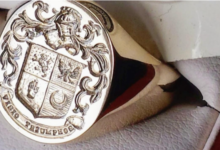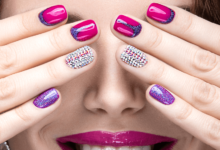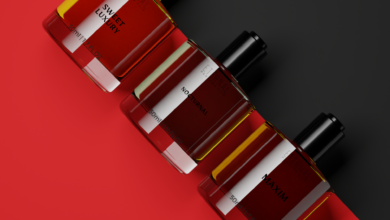
How Much Does a Diamond Cost?
Diamonds, the traditional stone of choice for engagement rings, are rare stones that can take upwards of 3.5 billion years to form in the earth. This contributes to their price and sought-after properties.
Diamond lovers can choose from an assortment of shapes and sizes, but 40% of people opt for round-cut diamond engagement rings.
If you’re shopping for a diamond, be it for yourself or someone else, you’re probably wondering, “What does a diamond cost?” This guide breaks down everything you need to know, from carat weight, clarity, color, and cut. So keep reading to learn more about diamond jewelry.
Table of Contents
Why Are Diamonds So Valuable?
Before diving into the factors that drive the cost of diamonds, it’s important to understand why diamonds are so valuable in the first place.
Some diamonds are upwards of 3.3 billion years old. They’re extremely rare because not many made their way from deep inside the earth to its surface.
Out of all the diamonds currently mined, only 50% of them are suitable to sell. This means the other 50% aren’t of a high enough quality.
Diamonds are expensive to mine and bring to the market, are available in limited quantity, and are highly desirable. In short, supply and demand drive the price of diamonds. They also retain their value extremely well. They’re not as rare as gold, but when paired with a gold setting, provide you with a one-of-a-kind piece of jewelry sure to stand the test of time.
Aside from their rare nature, the cost of diamonds is driven by several other factors, starting with the type of cut.
Types of Cuts
The diamond cut you purchase can affect the price significantly. As more of the diamond’s rough exterior is cut away, the work becomes more extensive, driving the price upwards. Let’s examine some popular cuts and their cost, using diamonds with a G Color VS2 for reference.
Round Cut
Round-cut diamonds are a popular choice and boast a classic, traditional look. A .5-carat round diamond is roughly $1,700. A one-carat round diamond costs around $7,300, and a two-carat round diamond can cost as much as $27,000.
Princess Cut
Another popular diamond cut is the princess cut. This sharp square diamond is striking in appearance and ranges from roughly $1,300 for a .5-carat stone to $4,800 for a one-carat stone.
Oval Cut
If you prefer e round shape but want something less traditional, consider an oval-cut diamond. This shape ranges in price from $1,200 for a half-carat to $5,400 for a one-carat stone.
Cushion Cut
If you like a square cut but with rounded edges, then consider the cushion cut. Its shape resembles that of a pillow, and it makes a beautiful center stone. For a .5-carat diamond, expect to pay roughly $1,200. A full-carat stone can cost roughly $4,200.
Pear Cut
Pear-cut diamonds combine a round diamond with a marquise shape, making them a unique choice for any ring. Prices range from about $1,300 for half a carat to $5,800 for a full-carat stone.
Radiant Cut
Radiant cut diamonds are similar to diamonds with an emerald shape and offer a beautiful sparkle. For half a carat, you can expect to pay roughly $1,100 and for a full carat, expect to pay around $4,500.
Emerald Cut
Emerald-cut diamonds typically have an elongated shape with cutoff corners. They cost anywhere from $1,000 for .5 carat to $4,500 for a full-carat diamond.
Asscher Cut
Asscher cut diamonds appear square, but actually, have well-defined cut corners that allow light to better enter the diamond. They cost roughly $1,100 for half a carat to $4,100 for a whole-carat stone.
Marquise-Cut
Marquise cut diamonds boast a unique shape. They’re long and narrow with two pointed edges. On average, a Marquise cut based on VS1 clarity is anywhere from $1,300 for a .5 carat to $5,600 for a full carat.
Heart Cut
As the name suggests, a heart-cut diamond is shaped like a heart. These symbolic stones cost roughly $1,300 for half a carat to $5,500 for a full-carat diamond.
For even more information about wholesale gemstone pricing, make sure to visit https://www.gemguide.com.
Carat Weight
The higher a diamond’s carat weight, the higher the price tag. Particularly large diamonds can be very expensive, as large stones are rarer to find than small ones, adding to their value.
If you’ve ever seen a diamond ring with a one-carat total weight, the price is most likely less than if you purchased a single one-carat diamond.
The more popular a carat weight is, the more expensive it’ll be. For example, 1 and 1.25-carat diamonds are popular sizes, driving up the price. It’s important to remember that the diamond market relies on supply and demand, so it may be difficult to find these sizes, further affecting their price.
Clarity
Before delving into clarity and how it affects the price of a diamond, it’s best to understand what clarity is. In short, clarity refers to a diamond’s absence of blemishes and inclusions. Inclusions are simply small imperfections found within a diamond.
The GIA Diamond Clarity Scale is broken into six categories. Some are further divided, creating a total of 11 grades.
- Flawless (FL): No inclusions or blemishes when looking with 10x magnification
- Internally Flawless (IF): No visible inclusions when using 10x magnification
- Very, Very Slightly Included (VVS1 and VVS2): Inclusions, but they’re so slight a skilled grader can barely see them using 10x magnification
- Very Slightly Included (VS1 and VS2): These inclusions are seen with effort using 10x magnification but are considered minor
- Slightly Included (SI1 and SI2): These inclusions are visible using 10x magnification
- Included (I1, I2, and I3): These inclusions are very visible and obvious when using 10x magnification; this may affect the transparency and brilliance of the diamond
10x magnification is the industry standard when observing a diamond. If a diamond has an inclusion visible to the naked eye, its price will be greatly impacted.
Clarity plays a large role in the cost of a diamond, but it’s not the most important. The cut is seen as one of the most pivotal factors in a diamond’s cost, as it determines how well the diamond can reflect light.
Additionally, the cut of a diamond can make a smaller stone appear larger than it is, and can mask certain imperfections. However, some shoppers value the carat weight of a diamond above all else and will purchase the most stone for their money, regardless of cut or clarity.
Color
A diamond’s color determines how rare it is. The rarer the stone, the more expensive it will be. The Diamond Color Scale helps gemologists grade diamond colors. It ranges from D to Z, so white diamonds can have 17 possible color grades.
D to F
D-color diamonds are the whitest and most colorless. They’re also the purest in color. They’re also extremely rare and difficult to find in nature, raising their price significantly.
Z color diamonds have a yellow tint and are at opposite sides of the color spectrum from D color diamonds.
Diamonds colored from D to F are all considered colorless. They’re all valuable and hard to find. Although diamond colors D, E, and F all look virtually the same, they can have a price discrepancy of roughly $1,300 between each letter.
G to J
Any diamonds scored from a G to a J have minimal traces of color. These hints of color are difficult for the naked eye to see, but they’re much less expensive than D to F diamonds.
K to M
K to M diamonds have a faint, yet visible, yellow hue to them. They’re not in demand the same way pure white diamonds are, so they’re less expensive.
N to R
These diamonds have noticeable color to them. They may look yellow or brown. They’re among the lowest in demand, reducing their price.
S to Z
These diamonds have the most obvious yellow or brown tint of all the diamond colors. Surprisingly, diamonds in the U category and beyond are more in demand than other colored diamonds, as they look like Fancy Colored diamonds.
Determining Diamond Cost
Now that you know what drives diamond cost, you can research the perfect stone for your upcoming jewelry purchase. Be sure to select the cut that you or your loved one likes best, and look for a diamond that rates well on the Diamond Color Scale.
Ask your jeweler what cut and size they recommend to best complement the setting of your choice.
If you enjoyed reading about diamond jewelry, then be sure to check out the rest of our site for more great content. And don’t forget to bookmark this page!








